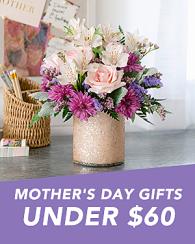Types of Outdoor Plants: Annual, Perennial, and Biennial
If you’re just beginning to garden for the first time, you’re probably struck by how much information there is out there on the subject. How to prepare your garden for planting, what to plant for your climate zone, how much to water your gardens and so many other questions will crop up as you get started, and most things will become easier as you get more experience under your belt.
One piece of information you should definitely know before starting a garden, though, is the difference between annual, perennial and biennial plants. Though basic, this information will help you understand what plants to put where as you continue experimenting with your landscaping. Check out this guide to the differences between the three types of plants:
Annuals
Annuals, including gerberas, marigolds and impatiens, are plants that grow, bloom and die, all within a single year. That means that you’ll have to replace the plant during the next growing season to fill your garden again. For this reason, they’re thought of as less maintenance than other types of plants because they don’t require a long-term commitment. One of the great things about annuals is their blooming time – they typically blossom all season long, which is much longer than perennials and biennials. Keep in mind that some annuals are self-seeding, which means they could potentially drop seeds that will flower the following year in a similar spot in your garden.
Perennials
Perennials, like alstroemeria and peonies, last three growing seasons or more, which means they’re a much longer commitment than annuals. However, they’re perfect for people who are looking to create a garden that doesn’t require as much year-to-year planting. Perennials also have a shorter flowering season than annuals, though the exact amount of time your flowers will be in bloom depends on what you plant, how well you maintain your garden and your climate. People typically plant perennials in the late summer or fall when starting with bulbs or seeds, but if you’re beginning with young seedlings, you can plant them in spring as well.
Biennials
Poppies and foxglove are two commonly planted biennials. These types of plants typically last two years before dying, and usually have better blossoms during the second year of their lifespan. However, like self-seeding annuals, biennials are also known for dropping seeds, which bloom two seasons later. So, if you want your biennials to flower every year, try planting them two years in a row – that way the two crops will alternate blooming.
What Should You Plant Outside?
So, now that you know the difference between the three types of plants, which ones are best suited to your garden? The truth is, there isn’t one clear answer. Many gardeners like to use all different types of plants so that they can ensure their garden is colorful for as long as possible during the spring and summer. If you’re planting containers for your porch, you may want to opt for annuals, which will last a long time, and won’t need to be brought indoors for the winter. Whatever you decide, don’t be afraid to experiment! You’ll discover what works best as you continue trying different combinations.
